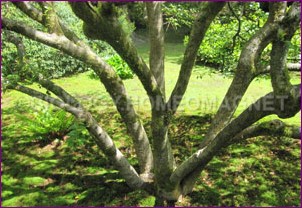Botany related pages:
- Botany
- Taxonomy
- Cell Fractionation
- Tracer Techniques
- Herbarium
- Plant Kingdom Classification
- Virus
- Structure of Virus
- Viral Infection
- Viral Replication
- Bacteria
- Classification of Bacteria
- Bacterial Cell Structure
- Reproduction of Bacteria
- Helpful Bacteria
- Others Helpful Bacteria
- Fungi
- Classification of Fungi
- Uses of Fungi
- Algae
- Red Algae
- Brown Algae
- Green Algae
- Economic Importance of Algae
- Lichens
- Moss Plant
- Non flowering Plants
- Plant Growth
- Plant Growth Regulators
- Macronutrients for Plants
- Micronutrients in plants
- Plant Movement
- Plant Tissue
- Simple tissue
- Vascular Tissue
- Vascular Bundle
- Tree roots
- Root Function
- Plant stem
- Nature of plant stem
- Function of Stem
- Stem Modifications
- Aerial Stem Modifications
- Sub Aerial Stem Modification
- Tree Leaves
- Anatomy of Leaf
- Chloroplast
- Chlorophyll
- Plant Fertilization
- Pollination
- Cross-pollination
- Plant Breeding
- Plant water relation
- Ascent of Sap
- Transpiration
- Affecting Factors of Transpiration
- Types of Fruits
- Seed Structure
- Seed Germination
- Types of germination
- Dispersal of Seeds
- Types of Flowers
- Flower Parts
- Floral Diagram
- Calyx
- Corolla
- Inflorescence
- Minerals Nutrition
- Auxin
There is different nature of plant stem. The nature of plat stem depends on its texture, that is, it can be soft and weak or sometimes it may be hard and erect and accordingly the stem may be classified into four major types. Those four types are: Herbs, under-shrubs, shrubs and trees. Let us we have some discussion: -
1) Herbs: The herbs are small plants with non woody and soft stem. The herbs can be erect or face down in nature. Depending upon the duration of their life cycles, the herbs can be classified four ways; those are as follows: -
i) Annuals: These plants live for one season only and complete their life cycles within one year. Examples: Wheat, rice, millets, mustered, barley etc.
ii) Biennials: These types of plant live for two successive seasons and complete their life cycles in two years. The initial year they grow vegeatatively, while in the second year they produce the reproductive structures. Example: carrot, radish etc.
iv) Perennials: These types of plants are permanent types in the sense that they complete their life cycles in more than two complete seasons. Example: Ginger.
2) Under-shrubs: in the nature of plant stem the Under-shrubs is another type. These plants have slightly woody stem and they are stronger than herbs, but weaker than the shrubs. Due to this type of nature they are called under-shrubs and they are perennial in nature. Example: brinjal, chilies etc.
3) Shrubs: Shrubs are another nature of plant stem. The medium sized, woody, perennial plants which branchesprofusely very close to the ground surface. This gives a bushy appearance and the main trunk is not distinctly distinguishable. Example: chinaroes, Duranta, Ixora etc.
4) Trees: In the nature of plant stem the trees are tall , woody, perennial plants, where the main stem grows for a considerable height before they produce the branches, they form an easily distinguishable trunks. They may be un-branched all though, with an apical crown of leaves as in monopodial stem of coconut, or may produce profuse branches to form a massive dendrobial structure like cotton, mango, banyan and so on.
Now we may discuss the branching system of the trees.
Branching System of Trees:
The appendages developing from the main axis of a plant are called branches. The branches usually arise from the axillary buds. All the branches are taking together constitute the branching system. The branching systems may be divided into the following types:-
a) Racemose: In this nature of plant stem of the branching system, the trunk grows by means of terminal bud in the shoot apex and it produces the lateral branches in acropetal succession. This gives a typical excurrent or pyramidal shape to the tree. Example: Polyalthia, Pinus etc.
b) Cymose: In this type of branching , the growth of the main trunk ceases after a definite time period and the secondary branches growprofusely to form a massive, dendrobial, deliquescent structure. Example: Mango, jackfruit.
ii) Dichotomous branching: In this nature of plant stem the type of branching, the tip of the stem bifurcates into two equal branches, each of which again bifurcates into two and so on. Example: Psilotum, Lycopodium etc.




